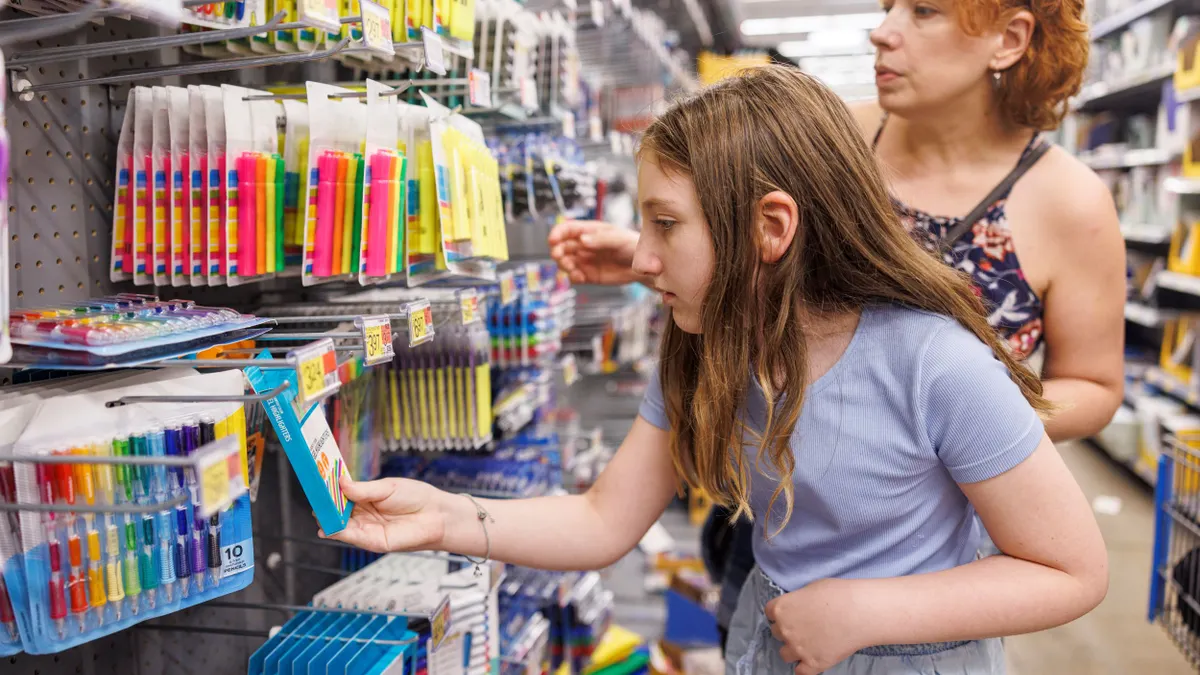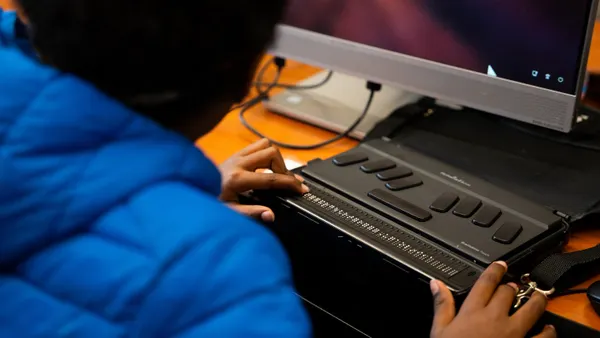Parents, teachers and schools are grappling with higher school supply costs this back-to-school season as the Trump administration’s global tariff policies ramp up.
In fact, school supply shopping is projected to be 7.3% more expensive between last school year and this year, according to an analysis released this month from Groundwork Collaborative and The Century Foundation. Those costs include a 42.6% price increase for index cards to a 12.7% increase for folders within the past year alone, the analysis found.
A separate report by the Center for American Progress also found that households are expected to spend an average of $900 on back-to-school expenses for the 2025-26 school year. Total spending on back-to-school shopping is projected to reach $39.4 billion in 2025, up from $38.8 billion from the prior year, according to the National Retail Federation.
So as teachers distributed shopping lists to parents this summer, the tension over school supplies has felt “like it’s coming to a head,” said Keri Rodrigues, founding president of the National Parents Union.
“There’s just this unprecedented amount of stress and anxiety that is building between teachers and educators and parents around back-to-school lists and supplies,” Rodrigues said. “It feels more tense now than I've seen it in the last 10 years that I've been doing parent organizing.”
Some districts get creative
It’s increasingly important that students and families receive help paying for school supplies as tariffs and inflation continue to drive up costs, said Dennis Willingham, superintendent of Walker County Schools in Alabama.
As a high-poverty rural district with over 70% of its 6,700 students qualifying for free or reduced-priced school meals, Walker County Schools has made it a priority to pay for all of its students’ school supplies, Willingham said.
“We know that we have families that are struggling out there,” Willingham said, adding that those families often can’t afford to pay between $100 to $300 per student for necessary school supplies before the new academic year.
The district’s initiative to pay for school supplies began during the COVID-19 pandemic and was initially covered through the one-time federal emergency funding known as the Elementary and Secondary School Emergency Relief, Willingham said. Since ESSER’s spending obligation deadline passed for most schools in September 2024, he said, this was the first year that Walker County Schools had to find alternative funding sources for students’ school supplies.
To keep that initiative going this year, the district asked its principals to encourage teachers to focus on spending the $1,000 in state funding that they each receive for classroom instructional supplies instead on student school supplies. Whatever gaps remain, Willingham said, the district supplemented with over $58,000 in federal Title I funds.
For the past five years, Arizona’s Deer Valley Unified School District has operated Ann E’s Closet & Pantry, a series of school-based, district-run stores that allow students and families who are low-income or experiencing homelessness to choose and pick up free food, clothing and school supplies, said Superintendent Curtis Finch. He added that the 34,000-student district serves about 1,000 students per month at these stores.
The stores are stocked with the help of donations from local churches and organizations, Finch said.
For district leaders looking to support struggling families during the back-to-school season, Finch recommends asking the local community for help in an organized and specific way. For instance, he said, don’t ask for general school supplies: Instead, list out what kinds of supplies, like pencils and markers that classrooms need.
“But if you don't give them direction, you'll get a bunch of stuff that'll just turn into work and won't meet the needs of the students,” Finch said.







 Dive Awards
Dive Awards





